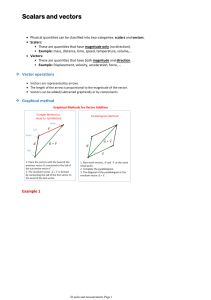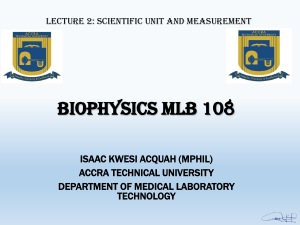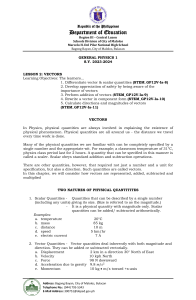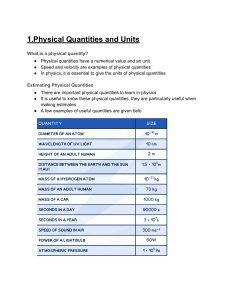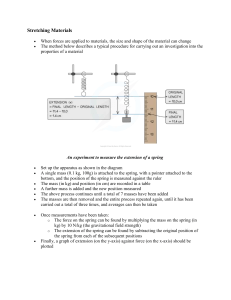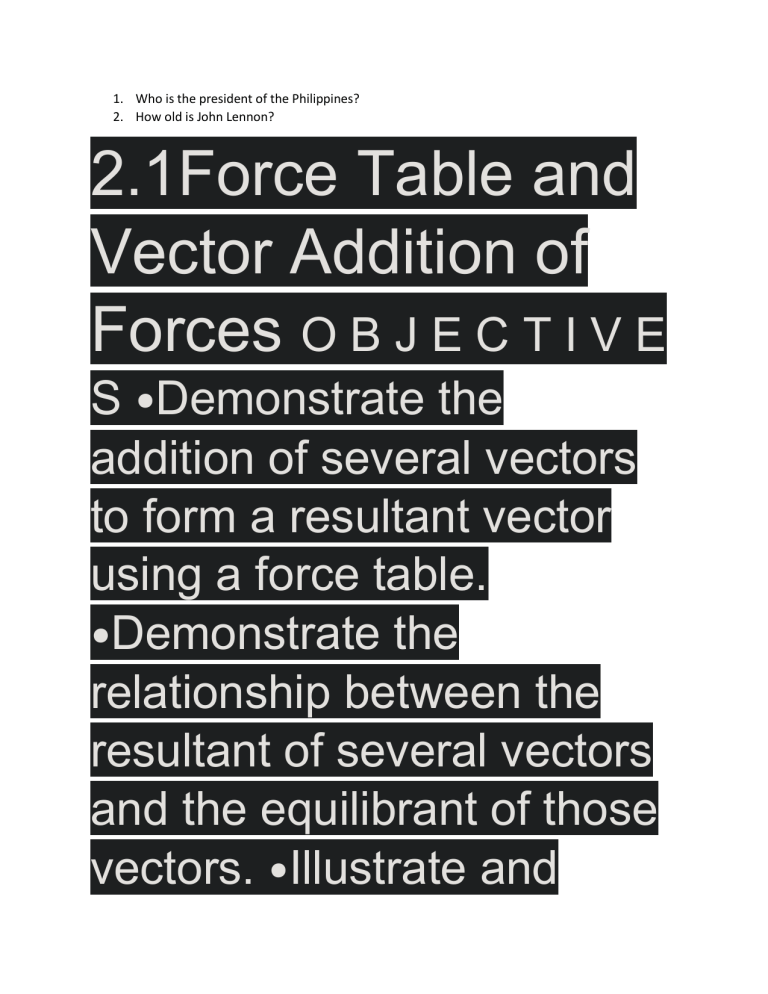
1. Who is the president of the Philippines? 2. How old is John Lennon? 2.1Force Table and Vector Addition of Forces O B J E C T I V E S •Demonstrate the addition of several vectors to form a resultant vector using a force table. •Demonstrate the relationship between the resultant of several vectors and the equilibrant of those vectors. •Illustrate and practice graphical and analytical solutions for the addition of vectors. E Q U I P M E N T L I S T •Force table with pulleys, ring, and string •Mass holders and slotted masses •Protractor and compass T H E O R Y Physical quantities that can be completely specified by magnitude only are called scalars. Examples of scalars include temperature, volume, mass, and time intervals. Some physical quantities have both magnitude and direction. These are called vectors. Examples of vector quantities include spatial displacement, velocity, and force. Consider the case of several forces with different magnitudes and directions that act at the same point.
